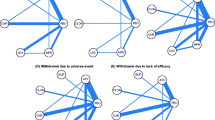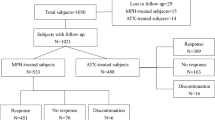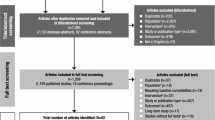Abstract
Objective
To compare the short term efficacy and tolerability of methylphenidate and atomoxetine in children with Attention deficit hyperactivity disorder (ADHD).
Design
Open label randomized parallel group clinical trial.
Setting
Child Guidance Clinic of a tertiary care hospital of Northern India from October 2010 to June 2012.
Participants
69 patients (age 6–14 y) with a diagnosis of ADHD receiving methylphenidate or atomoxetine.
Intervention
Methylphenidate (0.2–1 mg/kg/d) or atomoxetine (0.5–1.2 mg/kg/d) for eight weeks.
Main outcome measures
Treatment response (>25% change in baseline Vanderbilt ADHD Diagnostic Parent Rating Scale (VADPRS); Vanderbilt ADHD Diagnostic Teacher Rating Scale (VADTRS); Clinical Global Impression Severity Scale (CGI-S) at eight weeks and adverse effects.
Results
Treatment response was observed in 90.7% patients from methylphenidate group and 86.2% patients of atomoxetine group at an average dose of 0.45 mg/kg/d and 0.61 mg/kg/d, respectively. The patients showed comparable improvement on VADPRS (P=0.500), VADTRS (P=0.264) and CGI-S (P=0.997). Weight loss was significantly higher in methylphenidate group (−0.57±0.78 kg; P=0.001), and heart rate increase was observed at higher rate in atomoxetine group (7± 9 bpm; P=0.021).
Conclusion
Methylphenidate and atomoxetine are efficacious in Indian children with ADHD at lesser doses than previously used. Their efficacy and tolerability are comparable.
Trial Registration No.
CTRI/2011/08/001981
Similar content being viewed by others
References
Faraone SV, Sergeant J, Gillberg C, Biederman J. The worldwide prevalence of ADHD: is it an American condition? World Psychiatry. 2003;2:104–13.
Kidd PM. Attention deficit/hyperactivity disorder (ADHD) in children: rationale for its integrative management. Altern Med Rev. 2000;5:402–28.
Mannuzza S, Klein RG, Bessler A, Malloy P, LaPadula M. Adult psychiatric status of hyperactive boys grown up. Am J Psychiatry. 1998;155:493–8.
Pliszka S, AACAP Work Group on Quality Issues. Practice parameter for the assessment and treatment of children and adolescents with attention-deficit/hyperactivity disorder. J Am Acad Child Adolesc Psychiatry. 2007;46:894–921.
Subcommittee on Attention-Deficit/Hyperactivity Disorder; Steering Committee on Quality Improvement and Management, Wolraich M, Brown L, Brown RT, DuPaul G, et al. ADHD: Clinical practice guideline for the diagnosis, evaluation, and treatment of attention-deficit/hyperactivity disorder in children and adolescents. Pediatrics. 2011;128:1007–22.
Greydanus DE, Nazeer A, Patel DR. Psychopharmacology of ADHD in pediatrics: current advances and issues. Neuropsychiatr Dis Treat. 2009;5:171–81.
Kratochvil CJ, Heiligenstein JH, Dittmann R, Spencer TJ, Biederman J, Wernicke J, et al. Atomoxetine and methylphenidate treatment in children with ADHD: a prospective, randomized, open-label trial. J Am Acad Child Adolesc Psychiatry. 2002;41:776–84.
Kemner JE, Starr HL, Ciccone PE, Hooper-Wood CG, Crockett RS. Outcomes of OROS methylphenidate compared with atomoxetine in children with ADHD: a multicenter, randomized prospective study. Adv Ther. 2005;22:498–512.
Sangal RB, Owens J, Allen AJ, Sutton V, Schuh K, Kelsey D. Effects of atomoxetine and methylphenidate on sleep in children with ADHD. Sleep. 2006;29:1573–85.
Prasad S, Harpin V, Poole L, Zeitlin H, Jamdar S, Puvanendran K, et al. A multi-center, randomized, openlabel study of atomoxetine compared with standard current therapy in UK children and adolescents with attention deficit/hyperactivity disorder (ADHD). Curr Med Res Opin. 2007;23:379–94.
Wang Y, Zheng Y, Du Y, Song DH, Shin YJ, Cho SC, et al. Atomoxetine versus methylphenidate in pediatric outpatients with attention deficit hyperactivity disorder: a randomized, double-blind comparison trial. Aust N Z J Psychiatry. 2007;41:222–30.
Newcorn JH, Kratochvil CJ, Allen AJ, Casat CD, Ruff DD, Moore RJ, et al. Atomoxetine and osmotically released methylphenidate for the treatment of attention deficit hyperactivity disorder: acute comparison and differential response. Am J Psychiatry. 2008;165:721–30.
Yildiz O, Sismanlar SG, Memik NC, Karakaya I, Agaoglu B. Atomoxetine and methylphenidate treatment in children with ADHD: the efficacy, tolerability and effects on executive functions. Child Psychiatry Hum Dev. 2011;42:257–69.
American Psychiatric Association. Diagnostic and Statistical Manual of Mental Disorder, 4th ed. Text Revision. Washington DC: American Psychiatric Association; 2000.
Busner J, Targum SD. The clinical global impressions scale: A pplying a research tool in clinical practice. Psychiatry (Edgmont). 2007;4:28–37.
William JR. The Declaration of Helsinki and public health. Bull World Health Organ. 2008;86:650–2.
Indian Council Medical Research. Ethical Guidelines for Biomedical Research on Human Participants. New Delhi: Director-General, Indian Council Medical Research; 2006.
Gautam S, Batra L, Gaur N, Meena PS. Clinical practice guidelines for the assessment and treatment of attention deficit/hyperactivity disorder. In: Gautam S, Avasthi A, editors. Child and Adolescent Psychiatry Clinical Practice Guidelines for Psychiatrists in India. Jaipur: Indian Psychiatric Society; 2008. p. 23–42.
Wolraich ML, Lambert W, Doffing MA, Bickman L, Simmons T, Worley K. Psychometric properties of the Vanderbilt ADHD diagnostic parent rating scale in a referred population. J Pediatr Psychol. 2003;28:559–67.
Wolraich ML, Feurer ID, Hannah JN, Baumgaertel A, Pinnock TY. Obtaining systematic teacher reports of disruptive behavior disorders utilizing DSM-IV. J Abnorm Child Psychol. 1998;26:141–52.
Hanwella R, Senanayake M, de Silva V. Comparative efficacy and acceptability of methylphenidate and atomoxetine in treatment of attention deficit hyperactivity disorder in children and adolescents: a meta-analysis. BMC Psychiatry. 2011;11:176.
Sitholey P, Agarwal V, Chamoli S. A preliminary study of factors affecting adherence to medication in clinic children with attention-deficit/hyperactivity disorder. Indian J Psychiatry. 2011;53:41–4.
Author information
Authors and Affiliations
Corresponding author
Rights and permissions
About this article
Cite this article
Garg, J., Arun, P. & Chavan, B.S. Comparative short term efficacy and tolerability of methylphenidate and atomoxetine in attention deficit hyperactivity disorder. Indian Pediatr 51, 550–554 (2014). https://doi.org/10.1007/s13312-014-0445-5
Received:
Revised:
Accepted:
Published:
Issue Date:
DOI: https://doi.org/10.1007/s13312-014-0445-5




